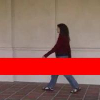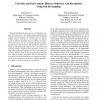267 search results - page 6 / 54 » Conditional models for contextual human motion recognition |
CVPR
2000
IEEE
14 years 10 months ago
2000
IEEE
The quest for a vision system capable of representing and recognizing arbitrary motions benefits from a low dimensional, non-specific representation of flow fields, to be used in ...
CVPR
2005
IEEE
14 years 10 months ago
2005
IEEE
Probabilistic models have been previously shown to be efficient and effective for modeling and recognition of human motion. In particular we focus on methods which represent the h...
IROS
2007
IEEE
14 years 3 months ago
2007
IEEE
— This paper describes an improved methodology for human motion recognition and imitation based on Factorial Hidden Markov Models (FHMM). Unlike conventional Hidden Markov Models...
FGR
2000
IEEE
14 years 1 months ago
2000
IEEE
Human motion can be understood on many levels. The most basic level is the notion that humans are collections of things that have predictable visual appearance. Next is the notion...
FGR
2004
IEEE
14 years 13 days ago
2004
IEEE
Human Identification using gait is a challenging computer vision task due to the dynamic motion of gait and the existence of various sources of variations such as viewpoint, walki...


